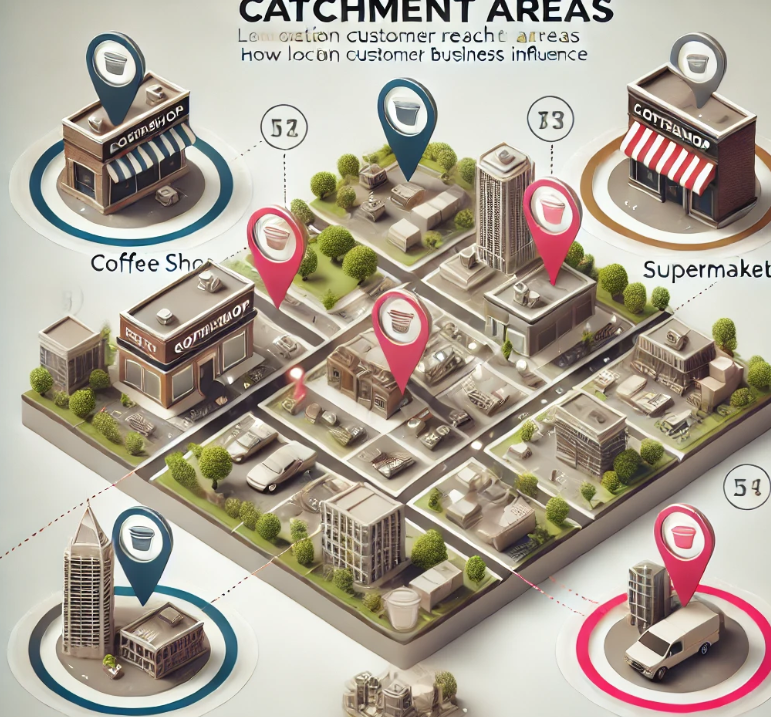Understanding Catchment Areas: How Location Affects Business Success

Choosing the right location for a business is about more than just foot traffic or rental costs - it’s about understanding your catchment area. A catchment area defines the potential market for a business, showing where customers come from and how far they are willing to travel.
Why are Catchment Areas Important?
Businesses don’t operate in isolation—they
serve a specific geographical market. By analysing a catchment area, you
can:
- Assess Demand – Understand the local population size, demographics, and income levels.
- Evaluate Competition – See how many similar businesses exist nearby.
- Identify Gaps – Spot underserved areas where demand exceeds supply.
- Plan for Growth – Expand into locations with the strongest potential customer base.
Catchment Areas Vary by Business Type
Not all businesses rely on the same
catchment size.
- Local cafés and convenience stores depend on customers within a short walking or driving distance.
- Retail stores and restaurants may attract people from a wider region.
- Specialist businesses (e.g., medical clinics, niche retailers) often draw customers from a much larger area.
How Data-Driven Catchment Analysis Helps
Instead of guessing, businesses can now
use location-based market analysis to define their real catchment
area. This means using demographic insights, property trends, commercial
activity, and other key data points to make smarter business decisions.
At Smart Location Analysis, we provide detailed reports that allow SMEs and individuals to analyse catchment areas for free — helping you make informed decisions based on real data.
Explore how understanding catchment areas can transform your business strategy. Try it now at www.smartlocationanalysis.com
#SmartLocationAnalysis #BusinessIntelligence #CatchmentAnalysis #MarketResearch #DataDriven #LocationAnalysis #BusinessGrowth<o:p></o:p>